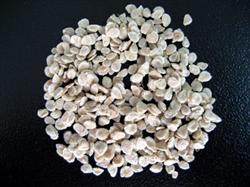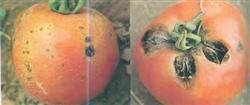How to choose Tomato seed

How to choose tomato seeds? How to handle seeds well? Please introduce the following methods to guide tomato seed selection: 1. Seed selection should be based on the growing season, cultivation methods, market demand to choose the appropriate tomato varieties. Excellent tomato varieties should have the characteristics of disease resistance, high yield and high quality. At the same time, check the maturity, fullness, mechanical damage, germination rate and germination potential of seeds and other indicators. The seed purity of qualified tomato seeds should be higher than 98%, the seed color should be pure, no mildew, the purity should be higher than 95%, the germination rate should be higher than 88%, and the moisture content should be lower than 8%. Therefore, the seeds should be purchased from scientific research units or seed departments with high reputation to prevent economic losses caused by purchasing fake and inferior seeds. 1000-grain weight is the main mark of seed plumpiness. If 1000-grain weight is lower than the lower limit, it should not be used in production. Generally, the 1000-grain weight of large fruit tomato seeds is about 3.2 g. In order to prolong the life of tomato seeds, we should create good conditions in the process of seed storage and prolong the life of seeds. When storing seeds, the seeds should be fully dried, the relative humidity of the air in the storage should be reduced as much as possible, and the temperature is generally below 5℃. The life span of tomato seeds is 3~6 years, and the utilization period in production is 2~3 years. 2. Seed treatment before sowing can reduce tomato seed carrying bacteria, improve seed vigor, promote uniform emergence and enhance seedling resistance. (1)Soaking is to make tomato seeds absorb enough water from seed germination to emergence in a short time under favorable temperature conditions. Soaking containers can be clean earthen pots, porcelain pots or plastic pots, do not use metal or greasy containers. Soaking method usually uses 22~28℃ clean water to soak tomato seeds. Water should immerse seeds, stir constantly, remove the deflated seeds floating on the water surface, wash the seeds by hand, remove the pulp, peel and mucus stained on the seeds, and then change to clean warm water of the same temperature for 6~8 hours, so that the seeds can fully absorb water. This method is simple and safe, but it has no disinfection and sterilization effect on seeds. In recent years, with the continuous improvement of cultivation technology, the following methods are often used to treat seeds: The specific method of trace element treatment is to prepare a solution of various trace elements according to a certain proportion. The formula is 5000kg of cold boiled water, 2g of copper sulfate, 2g of boric acid, 2g of zinc sulfate, 1.5g of manganese sulfate and 0.1g of ammonium sulfate. The tomato seeds are then wrapped in gauze and immersed in the solution for 24 hours before being removed. After drying, they are immersed for another 12 hours. It can promote tomato ripening and increase yield. Gibberellin treatment Soaking seeds with 5%~10% gibberellin solution can promote germination and seedling growth, but the concentration should not be too high, otherwise it will cause excessive seedling growth. In addition, 1% sodium bicarbonate solution can also be used for 24 hours to promote plant development and promote early maturity. (2)Seed disinfection tomato seeds spread many diseases, such as damping-off disease, leaf mold, virus disease, early blight, blight, spot blight, ulcer disease, etc. Therefore, seeds must be disinfected before sowing. There are many ways to disinfect seeds, and one can be selected according to local conditions. Soaking tomato seeds in warm soup: soaking tomato seeds in cold water for 10 minutes, then putting them into hot water at 50 DEG C, stirring rapidly continuously to heat the seeds evenly, supplementing hot water at any time, measuring the water temperature with stick thermometer to stabilize the water temperature at 50 - 52 DEG C, taking them out and putting them into cold water for 20 - 30 minutes to dissipate residual heat, and then soaking them in warm water at 25 - 30 DEG C for 4 - 6 hours. This method is simple, low cost, strong sterilization, is a commonly used disinfection method. High temperature treatment: dry seeds were put into a 70℃ incubator for 72 hours, then soaked, germinated and sown, which had certain control effect on tomato virus disease. Soaking seeds with pesticide The seeds are treated with disinfectant to disinfect pathogenic bacteria attached to the surface of the seeds. The main commonly used agents are: A. formalin First put the seeds into clean water for 4~5 hours, then put them into 1% formalin solution (i.e. 40% formaldehyde solution 1 part mixed with water 99 parts), soak for 15~20 minutes, then take them out and wrap them with damp cloth, put them in a closed container for 2~3 hours, fumigate, and then rinse them repeatedly with clean water. Can reduce and control tomato early blight and blight. B. Kangkuning with each (2 ml) Kangkuning add 10~15 kg of water, soak for 4~5 hours, and then wash the seeds repeatedly with water, slightly dry, have control effect on blight. C. Potassium permanganate First soak the seeds in warm water at 40 ° C for 3~4 hours, and then put them into 1% potassium permanganate solution for 10~15 minutes to kill the germs on the surface of the seeds by strong oxidation. After the seeds are taken out, they are washed with clean water to reduce the harm of canker disease and tobacco mosaic virus disease. D. Redo mildew Disinfection with 25% Redo mildew 1000 times solution can prevent seed surface from carrying late blight and cotton rot. E. Hydrochloric acid soaking with 0.5% dilute hydrochloric acid solution for 3 hours can eliminate the bacteria attached to the surface of the seed. F. Seed dressing with 70% diclosone powder, the dosage of which is 0.3% of the seed weight; seed dressing with 50% dichloronaphthalene wettable powder, the dosage of which is 0.2% of the seed weight, has a significant effect on preventing tomato seedling blight. The dosage of seed dressing should be accurate, mixed evenly with seeds, seeds should be dried, operators should wear masks and gloves to ensure safety. (3)Germination seed soaking disinfection, in order to promote rapid development of young embryos and germination. In the process of germination, appropriate temperature, moisture and air environment should be provided. The optimum temperature for germination of tomato seeds was 25~30℃ and the relative humidity was above 90%. In the process of germination, the seeds should be checked and turned frequently, and the seeds should be washed with warm water of about 30℃ 1~2 times a day on time, and the seeds should be dried or dried slightly before germination, so as to maintain humidity and change the air. Under suitable conditions, tomato seeds can germinate after 2~3 days. The commonly used germination methods are as follows: the earthen pot germination method will wash the seeds soaked and disinfected, wrap them with clean wet gauze, put them into the earthen pot with rice straw, so as to avoid water at the bottom and mildew seeds, cover them with damp sacks or towels to maintain humidity, and then put the earthen pot in the pressure fire channel, hot pit head or germination box. Mixed sand germination method will soak disinfection after washing clean seeds and washed river sand according to the ratio of 1: 1.5 mix well, into the earthen basin, covered with wet sand or damp cloth, and then placed in the appropriate temperature to germinate. Electric heating temperature control method controls temperature by installing electronic temperature controller in germination box and keeps proper air humidity. The temperature of germination should be lower at first, then gradually increased, and then decreased (to 20~24℃) when the radicle was about to break through the seed coat, so as to promote the radicle to be strong. When about 70% of the seeds are exposed to white, the seeds should be wrapped in wet towels and placed in the refrigerator at a temperature of about 5 ° C and maintained at a suitable humidity. When the conditions are good, sow again. Click for more tomato growing techniques Click for more vegetable growing techniques
- Prev

How to judge tomato seed quality
How to judge tomato seed quality? The quality of tomato seeds mainly depends on seed plumpiness, germination percentage, germination potential and seed purity. (1) The fullness is the fullness of the seed. It is generally expressed by 1000-grain weight, that is, the mass (g) of 1000 seeds. The bigger the weight, the more...
- Next

How to Control Tomato seed Diseases and pests
How to control tomato seed diseases and pests? Please introduce the general diseases of tomato seeds as follows: (1) Tomato flower skin disease, which is a physiological disease, which is also called tendon rot or stripe rot or with rot, which mainly harms the fruit. One is browning: cutting open the diseased fruit.
Related
- Where is it suitable to grow horseradish in China? it is expected to see the middle altitude horseradish in Alishan.
- How to prevent tomato virus disease reasonably? (Control methods included)
- Many people like to plant towel gourd on the balcony. What are the main points of this method and management?
- What crops can chili peppers be mixed with?
- Fertilization techniques and matters needing attention in Tomato
- What are the grafting techniques for peach seedlings in spring?
- Harm and control methods of root swelling disease of Chinese cabbage
- What are the pests of sweet potatoes? How to prevent and cure it?
- Symptoms, causes and Control methods of navel Rot in Tomato
- The cause of "Cucumber rotten bibcock" in Farmers' planting Cucumber and its Control Plan

